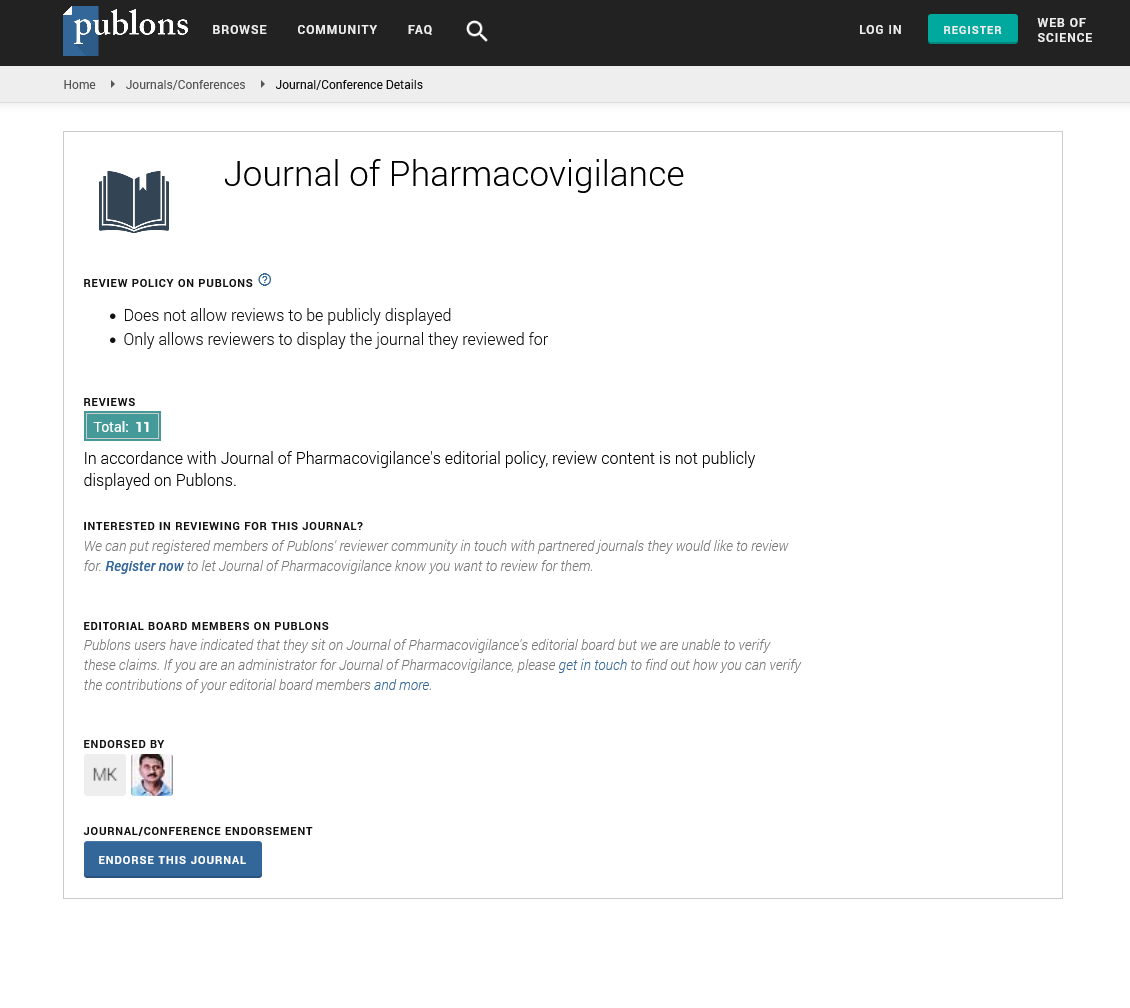Indexed In
- Open J Gate
- JournalTOCs
- The Global Impact Factor (GIF)
- RefSeek
- Hamdard University
- EBSCO A-Z
- OCLC- WorldCat
- Publons
- Euro Pub
- Google Scholar
Useful Links
Share This Page
Journal Flyer

Open Access Journals
- Agri and Aquaculture
- Biochemistry
- Bioinformatics & Systems Biology
- Business & Management
- Chemistry
- Clinical Sciences
- Engineering
- Food & Nutrition
- General Science
- Genetics & Molecular Biology
- Immunology & Microbiology
- Medical Sciences
- Neuroscience & Psychology
- Nursing & Health Care
- Pharmaceutical Sciences
Perspective - (2022) Volume 10, Issue 2
Note on Pharmaceutical Products
Hadi Naser*Received: 24-Jan-2022, Manuscript No. JP -22-356; Editor assigned: 27-Jan-2022, Pre QC No. JP -22-356(PQ); Reviewed: 10-Feb-2022, QC No. JP -22-356; Revised: 14-Feb-2022, Manuscript No. JP -22-356(R); Published: 21-Feb-2022, DOI: 10.35248/2329-6887.22.2.356
Description
Pharmaceuticals are composed of active ingredients in combination with additional materials selected to control dose supply, improve performance and facilitate manufacturing. Especially for small molecules, the synthesis of processes for producing drugs is a classic problem of reaction pathway selection and process synthesis, but it becomes more difficult because impurities need to be minimized. Of course, the details of the product design sub-problems depend on the shape of the product. Solid oral, injectable or topical. Drug design is essentially a formulation design issue, but it is complicated by manufacturing process constraints, the need to promote patient compliance and the requirements to achieve the desired therapeutic performance. The use of physiology based on models to help assess drug properties, toxicity and dose levels can serve as an important tool in product design and has received limited attention from the PSE community. The integration of active ingredients and drug processes, traditionally spatially and systematically separated, offers interesting potential for both process simplification and process enhancement. Finally, the growing demand for pharmaceutical companies to take responsibility for unused and expired products are the transformation of existing supply chains that enable the collection and return of such materials and innovative reprocessing. It poses a challenge to the possible design of the process.
Types of pharmaceutical products
• Oral drugs
• Parenteral formulations
• Topical medicines
• Modified release formulations
• Novel drug formulations
• Oncological formulations
Product approval
In the United States, new medicines need to be approved by the Food and Drug Administration (FDA) as safe and effective. This process typically involves the application of a new investigational drug with sufficient preclinical data to support conducting a human clinical trial. After IND approval, three phases of largescale human clinical trials can be conducted in stages. Phase I usually uses healthy volunteers to study toxicity. Phase II may involve patient pharmacokinetics and medication and Phase III is a very large efficacy study in the target patient population. Upon successful completion of the Phase III test, the regulatory agency submission will be submitted to the FDA. The FDA reviews the data and if the benefit risk assessment is positive, the product is approved in the US market. The fourth phase of postmarketing surveillance is often required because even the largest clinical trials cannot effectively predict the prevalence of rare side effects. Post-marketing surveillance ensures that the safety of a drug is closely monitored after it is put on the market. Indications may need to be limited to a specific patient group or the substance may be completely withdrawn from the market. The FDA provides information on approved medicines on the orange book website. In the UK, the Medicines and Healthcare Products Regulatory Agency (MHPRA) approves and evaluates the use of medicines. Approval in the UK and other European countries is usually slower than approval in the United States. The UK and Wales National Health Technology Assessment Organization (WNHTAO) then decides if and how the United Kingdom National Health Service (NHS) permits their use. The UK National Medicines Collection (NMC) is the primary guide for pharmacists and clinicians. Many Western countries other than the United States have developed a "fourth hurdle" for costeffectiveness analysis before introducing new technologies. It focuses on the "price of effectiveness" of the technology in question. In England and Wales, the NICE will determine whether the NHS will make medicines and technologies available and under what circumstances with the Scottish Pharmaceutical Consortium of Scotland and the Pharmaceutical Benefits Advisory Board of Australia. The product must exceed the profitability threshold for it to be approved. Treatment must represent the "value of money" and the net benefit to society.
Citation: Naser H (2022) Note on Pharmaceutical Products. J Pharmacovigil. 10:356.
Copyright: © 2022 Naser H. This is an open-access article distributed under the terms of the Creative Commons Attribution License, which permits unrestricted use, distribution, and reproduction in any medium, provided the original author and source are credited.

